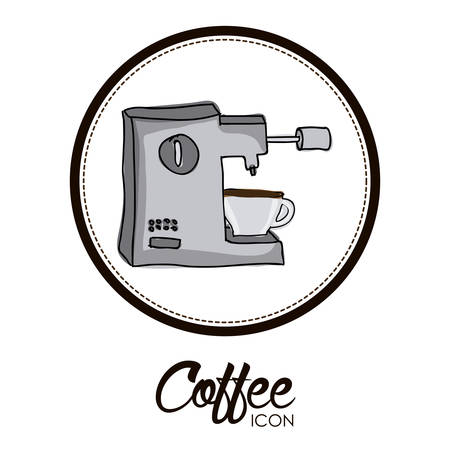Introduction to Cold Brew: A Brief Overview
If you stroll down any bustling British high street these days, chances are youll spot more than a few people clutching sleek cups of cold brew. Once an exotic curiosity from across the Atlantic, cold brew coffee has quietly seeped into the fabric of UK café culture. But what exactly is cold brew, and why does it stand apart from the time-honoured cuppas that have long defined British coffee and tea traditions?
Unlike the robust filter coffees or the classic builder’s tea brewed with boiling water, cold brew is crafted by steeping coarsely ground beans in cold water for an extended period—usually 12 to 24 hours. This slow extraction process yields a beverage that is markedly smoother, less acidic, and often subtly sweet compared to its hot-brewed counterparts. It’s a world away from the strong espresso shots beloved in Italian-style cafés or the milky lattes favoured on chilly British mornings.
This refreshing alternative first caught the attention of adventurous London baristas and globetrotting caffeine enthusiasts before gradually making its way onto mainstream menus across the UK. Today, cold brew isn’t just a summertime novelty—it’s become a symbol of modern British taste, blending global innovation with local sensibilities. As we trace its journey from niche curiosity to everyday staple, we uncover not just a new way to enjoy coffee, but a fascinating reflection of Britain’s evolving drinking habits.
2. Cold Brew Arrives in Britain: Early Days and First Impressions
Looking back, the arrival of cold brew on British soil was something of a quiet revolution. In a land famed for its devotion to the humble cuppa and traditional filter coffee, the idea of coffee steeped slowly in cold water sounded, at first, like a passing fad imported from across the Atlantic. When cold brew began making its way into the UK around the early 2010s, reactions were predictably mixed. Many Britons—accustomed to piping hot lattes or classic builder’s tea—were sceptical about this chilled, jet-black concoction served over ice.
It was London, ever the trendsetter in food and drink innovation, that embraced cold brew first. Independent cafés in Shoreditch and Soho started offering it as an alternative to iced coffee, touting its smoothness and low acidity. Coffee aficionados were intrigued; casual drinkers were bemused. The first sips often prompted raised eyebrows—a far cry from the comfort of a milky flat white. Yet, those who gave it a chance found themselves enchanted by its bold yet mellow character.
How Cold Brew Was Received: A Tale of Two Reactions
Group |
First Impression |
Adoption |
|---|---|---|
| Coffee Connoisseurs | Curious about flavour complexity and brewing method | Became early adopters; spread the word via blogs and social media |
| Everyday Drinkers | Sceptical; found it too strong or unconventional at first | Gradually warmed up as it became more accessible and popularised by major chains |
By 2015, with artisan roasters like Workshop Coffee and Ozone launching their own takes on cold brew, it was clear that this wasn’t just a fleeting novelty. London’s café culture began to shift: cold brew was featured on chalkboard menus alongside batch-brewed filter and espresso-based drinks. This innovative beverage started popping up everywhere—from pop-up markets in Hackney to hipster brunch spots in Manchester.
A New Ritual Emerges
At this stage, cold brew was still a marker of urban cool—a drink for those “in the know.” Yet its refreshing taste and caffeine kick soon caught on with a wider audience seeking alternatives during Britain’s sporadic heatwaves. What had begun as an American import now felt right at home among exposed brick walls, minimalist interiors, and the creative bustle of British cities.

3. From Hipster Novelty to Daily Fix: Shifting Perceptions
Cold brew’s journey across the UK is a fascinating tale of how a once-niche beverage evolved into an everyday essential. When cold brew first appeared on the British coffee scene, it was largely seen as a hipster novelty—something you might spot in an East London artisan café with filament bulbs and exposed brickwork. The drink’s photogenic appeal, especially when poured over ice in minimalist glassware, made it a darling of Instagram feeds from Shoreditch to Soho. At first, many Brits regarded cold brew with mild curiosity, perhaps even a touch of scepticism—after all, the UK has always prided itself on its classic hot brews, from builder’s tea to flat whites.
But as the third-wave coffee movement gained momentum, cold brew began to shed its outsider status. Specialty cafés championed its smooth flavour profile and natural sweetness, attracting adventurous coffee lovers eager to try something new. The drink’s low acidity and refreshing chill proved irresistible during those rare but glorious British summer spells, quickly winning over both caffeine aficionados and casual sippers alike. Soon enough, what started as an Instagrammable quirk became part of the UK’s daily coffee lexicon.
The shift was unmistakable: suddenly, you could find cold brew not only in trendy urban hubs like Manchester’s Northern Quarter or Bristol’s harbourside but also on supermarket shelves and high street chains. This transformation reflected a broader change in Britain’s beverage culture—a willingness to embrace new rituals while still celebrating tradition. Today, whether you’re grabbing a bottle from your local M&S or enjoying a draught pour in Glasgow’s West End, cold brew is no longer just for the early adopters; it’s become a staple for anyone seeking a refreshingly modern take on their daily fix.
4. Local Adaptations and British Flavours
As cold brew gained momentum across the UK, British cafés and roasteries wasted no time in stamping their own identity on this global trend. Rather than simply replicating American or Australian versions, UK coffee professionals began experimenting with native ingredients, local roasts, and creative infusions that speak to British sensibilities. The result? A wave of cold brews as diverse as the nation’s landscapes—each glass reflecting a unique blend of tradition and innovation.
Homegrown Roasts: From Yorkshire to Cornwall
One hallmark of the UK’s cold brew scene is a focus on locally roasted beans. Regional roasteries from Leeds to Bristol have developed bespoke blends specifically for cold extraction, often highlighting single-origin coffees that bring out fruity, floral, or nutty notes when brewed slowly over hours. These local roasts are often lighter and more nuanced compared to their American counterparts, allowing the natural character of the bean—and sometimes even the terroir—to shine through.
British Botanicals: Infusing Heritage into Every Sip
The British love affair with botanicals isn’t limited to gin. Many cafés now infuse cold brew with homegrown herbs and flowers—think elderflower from Kentish hedgerows, Scottish heather, or even Cornish seaweed. These additions lend a distinctly British twist, marrying the country’s botanical heritage with contemporary coffee culture.
Signature Styles Across the Isles
| Café/Region | Signature Cold Brew Twist |
|---|---|
| London | Earl Grey-infused cold brew served over tonic water |
| Edinburgh | Single-origin Highland roast steeped with wild Scottish heather |
| Bristol | Cold brew blended with locally sourced oat milk and honeycomb syrup |
| Cornwall | Kelp-tinged cold brew paired with lemon zest for coastal freshness |
| Manchester | Chilled nitro brew topped with Lancashire cream foam |
A Celebration of British Craft and Taste
This regional creativity not only caters to local palates but also encourages a sense of place in every cup. By incorporating everything from artisan syrups (like rhubarb and ginger) to seasonal fruits and botanicals, UK cafés have ensured that cold brew here is far more than an imported novelty—it’s a bona fide expression of British taste and craft. These adaptations continue to evolve, making each visit to a UK coffee shop an opportunity for discovery.
5. Cold Brew in British High Streets and Supermarkets
Not so long ago, cold brew was the preserve of specialist coffee houses tucked away in London’s trendiest boroughs or independent cafés peppered across university towns. Today, this chilled coffee sensation has well and truly spilled out onto the British high street, making its way into mainstream chains like Pret A Manger, Costa Coffee, and Starbucks. These big names have not only given cold brew pride of place on their menus but have also innovated with flavoured options and dairy alternatives to suit evolving tastes.
The influence doesn’t stop at the café door—cold brew has rapidly colonised supermarket shelves too. A stroll down the chilled drinks aisle at Sainsbury’s or Tesco now reveals an impressive line-up: sleek bottles from local roasteries, international brands, even cans promising a “barista-quality” experience at home or on the go. The accessibility factor cannot be overstated; what was once a curious treat for coffee aficionados is now an everyday grab-and-go staple for commuters, students, and professionals alike.
This widespread availability signals more than just a passing fad. It marks cold brew’s transition from niche indulgence to a fixture in British daily life. Much like how ready-to-drink tea or traditional flat whites became household staples, cold brew is firmly entrenched in the UK’s modern beverage culture. Whether enjoyed during a summer stroll along the South Bank or sipped at your desk on a grey Monday morning, cold brew embodies the UK’s evolving relationship with coffee—one that values both tradition and innovation.
6. Looking Forward: The Future of Cold Brew in the UK
The journey of cold brew in the UK has been nothing short of remarkable, evolving from a quirky curiosity to a beloved staple on high streets and in artisan cafés alike. But as we gaze into the future, what trends and shifts can we expect over the next decade?
Emerging Trends: Beyond Black Coffee
British coffee lovers are known for their adventurous palates, and the coming years are set to witness a wave of creative cold brew variations. Expect to see an increase in nitro-infused options, sparkling cold brews, and innovative infusions with botanicals or local fruits. As wellness culture continues to flourish, look out for adaptogenic blends and plant-based milks finding their way into cold brew menus across the country.
Sustainability: Brewing a Greener Future
With sustainability firmly rooted in British consumer consciousness, the future of cold brew will be closely tied to eco-friendly practices. Cafés and roasters are already championing reusable cups, ethically sourced beans, and zero-waste production methods. In the next decade, we’ll likely see more circular economy initiatives—think refillable growlers or partnerships with local farms for composting spent grounds—ensuring every cup is as kind to the planet as it is to our taste buds.
The Evolving British Palate
Traditionally, Brits have favoured tea or classic hot coffee, but today’s drinkers are driving demand for nuanced flavour profiles and seasonal offerings. Regional roasters are experimenting with single-origin beans that highlight British preferences for smoothness and subtle fruit notes. As cold brew cements its place in daily routines—from morning commutes to al fresco picnics—it’s clear that British tastes will continue to shape its evolution, blending heritage with innovation.
The next chapter of cold brew in the UK promises a harmonious blend of tradition and trendsetting flair, all filtered through the lens of sustainability and local character. Whether you’re sipping on a rooftop in Shoreditch or at a village fête in Cornwall, cold brew is set to remain both a cultural marker and a refreshing pleasure for years to come.


